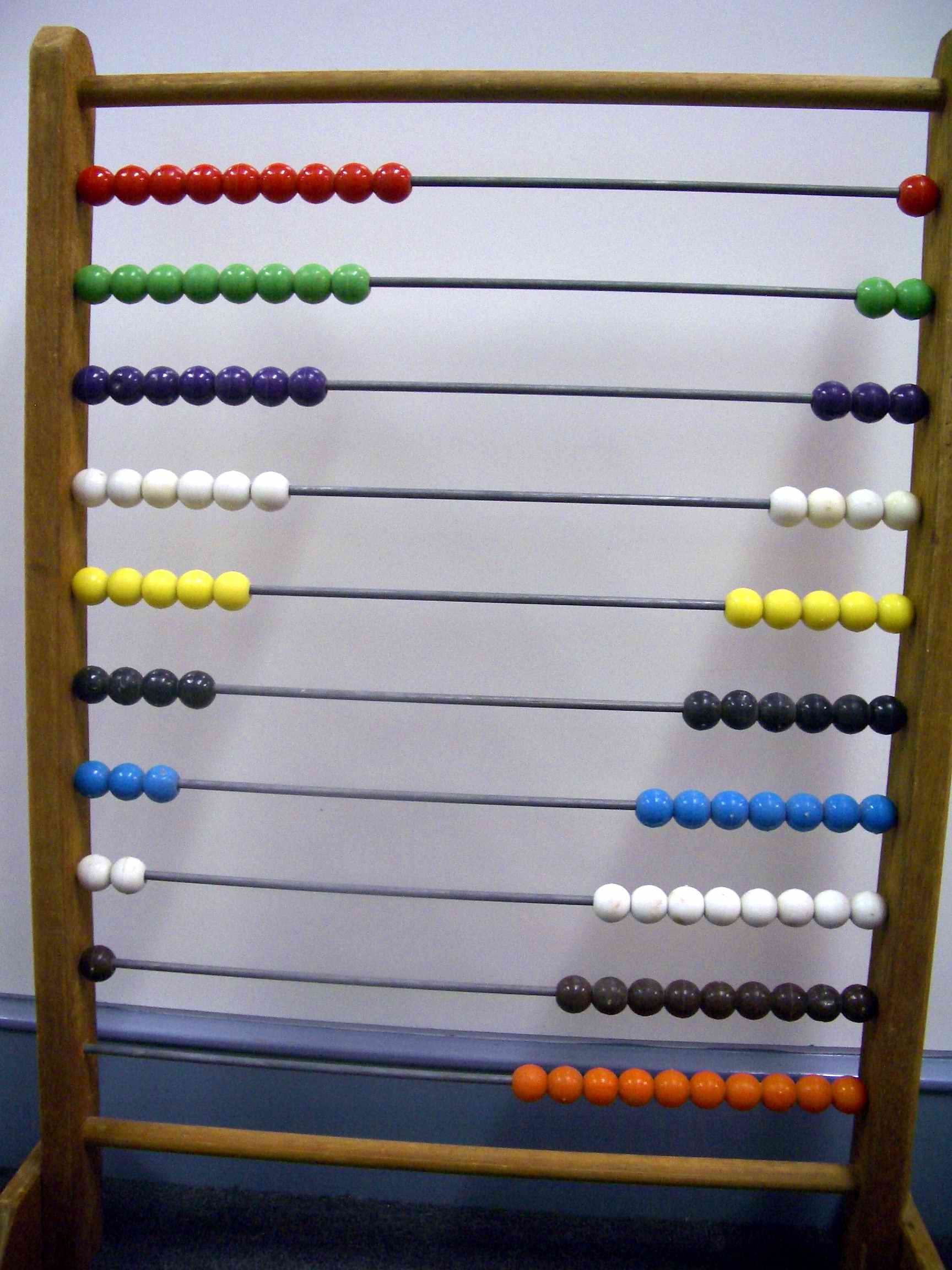Complements to Ten: 1.5
Supporting materials
Indicator of Progress
Students can fluently give two numbers that total ten. For example, given the number seven, students can say that three more are needed to make ten.
The next step is to realise that it is better to count on from the larger of the two numbers. Previously, students will find the total of two collections by recounting all the objects.
Before achieving this, students may need to count physical objects by ones to find totals that make ten. They may be able to find complements to ten (e.g. “I have 8 – think 8, 9 10 – so 2 more make ten”) but they do not know them fluently. Students may not recognise the commutativity of addition, that is, they may not recognise that knowing 6 + 4 =10 means they know that 4 + 6 =10 and they do not have to recount the collections.
Being able to fluently identify complements to ten is an important building block for computation, and helps establish ten as a unit.
Illustration 1: Stages in finding the total of two collections
Students who count by ones usually keep track of the count by touching the objects being counted, nodding their heads or tapping as they track with their eyes the objects to be counted. Learning to use simple strategies like this is important for them to maintain one-to-ne correspondence between objects and number names.
Initially, given two separate collections of counters, students will count by ones using three counts: The first count of the top six dots (below) will be 1, 2, 3, 4, 5, 6, then the four dots will be counted: 1, 2, 3, and 4. The third count will be of the combined groups 1, 2, … , 9, 10.
Later, students count by ones starting at one but are able to focus on the two groups as a single collection and count sequentially from one to ten: 1, 2, 3, 4, 5, 6 (top row of dots) 7, 8, 9, 10 (bottom row of dots).
Asked to find 4 + 6, students who use the ‘count on’ strategy will usually start from the four and count on six saying: “four, five, six, seven, eight, nine, ten”.
Later students will realise that it is more efficient to start at the larger number, finding 6 + 4 instead. They will count on from six saying: “six, seven, eight, nine, ten”.
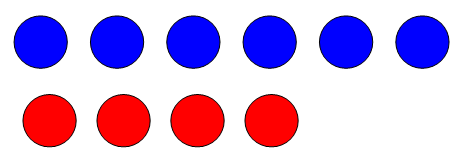
Fluency in number facts including complements to ten builds on these foundations.
There are some students at this level who use their own “derived facts” intuitive strategies for example “double 4 plus 2” or ‘just know’ that six plus four is ten.
Illustration 2: Moving on from counting by ones
Tens Frames are useful to demonstrate the addition of two groups and assists students to work out the total without counting by ones. The most effective use of Tens Frames is to determine the missing addend as the number of counters to be added is clearly defined by the number of blanks on the Tens Frame. For example, in the Tens Frame below the student can see the six green circles and that there are four blank spaces. A student would say something like: “I have six and I need four more so six and four make ten”.

Teaching Strategies
Before students can instantly recall complements to ten, they will have used concrete materials to model, then calculate the total of two or more collections. Using Tens Frames assists in developing “ten” as a unit. Once they are confident working with complements to ten students can move on to making and recording complements to twenty.
At a prior stage, students can learn complements to five using the five fingers on one hand in the same way as Tens Frames are used here.
Activity 1: Make Ten is an activity where students use a Tens Frame and replace some of one coloured counters with a different colour and record the combinations that are made.
Activity 2: How Many More to Make Ten is an activity that uses Tens Frames and students determine the number of blank squares after some of the squares are covered by counters.
Activity 3: Hidden Dots requires students to determine the number of counters hidden under a piece of card.
Activity 4: Find Your Partner is a game/activity where students have to find their partner so that together they have the required total number of dots.
Activity 5: Bead Frame Patterns uses a common teaching aid to display the patterns in complements to ten.
Activity 1: Make Ten
Students are given a Tens Frame and take ten counters of the same colour.

Students change some of the counters with some of another colour and record as an addition to ten.
For this Tens Frame, studnets can record that 6 + 4 make 10 and that 4 + 6make 10.

Once all the combinations of two numbers have been recorded encourage students to use a third colour and write all the combinations that are formed.
For example, for the Tens Frame below students should be able to record that:
10 is 5 + 3 + 2 or 5 + 2 + 3 or 2 + 3 + 5 or 2 + 5 + 3 or 3 + 2 + 5 or 3 + 5 + 2

Make 20
Once students are successful with Make Ten and can make a total of ten in many ways, change the activity to Make Twenty. Students start with 20 counters of the same colour and exchange some of the counters for a different colour.

Some of the combinations for 20 that students may record for the Tens Frames above may include:
16 + 4, 4 + 16 or 10 + 6 + 4 or 10 + 4 + 6 or 6 + 4 + 10
The illustration below shows that ten frames can also be made in other ways.
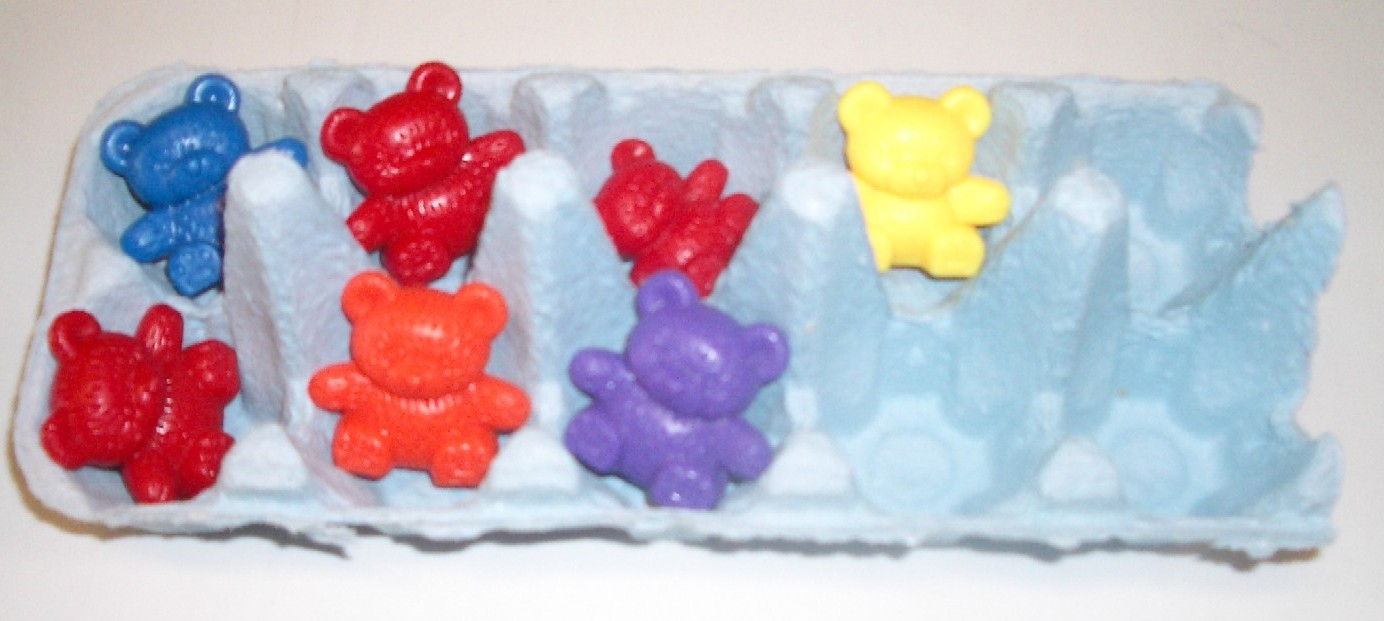
Activity 2: How Many More to Make Ten?
Students are shown a Tens Frame with a certain number of dots and asked: “How many more dots do I need to make ten?” Teachers can observe whether the students focus on the number of dots then work out how many more they need, or focus on the blank squares. Teachers can present the dots in various patterns and see if students can still identify the number of dots needed to make up to ten. In the following examples six dots are shown in different patterns.
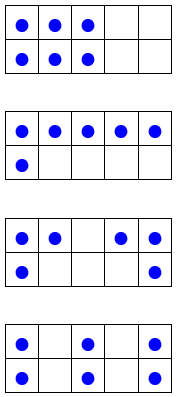
How many More to Make Twenty
Once students are successful with the activity “How Many More to Make Ten?” they can be introduced to “How Many More to Make Twenty”. In the activity “How Many More to Make Twenty” students are given two Tens Frames. In the example below one Tens Frame has ten counters the other has 5 counters.

Introductory questions could include:
- How many Tens Frames are here, and how many counters do I need to fill them? (Ans: 2 frames and 20 counters)
- How many counters in this Tens Frame? (Teacher points to the full Tens Frame, then to the incomplete Tens Frame.)
- How many counters altogether?
- How many more counters do I need to make twenty?
Once students have used the large Tens Frames and counters they can use dots on small Tens Frames. Teachers can print small Tens Frames from this Small Tens Frames template.
Activity 3: Hidden Dots
The teacher places ten counters on the table and asks students to count them before they cover some of the counters with a piece of card. Students are asked to say how many counters they think are hidden. The teacher then removes the cover and student can check their response. In the example below the students can see the six counters on the table and once they have made a guess the cover is lifted and the student can count the four that were covered.
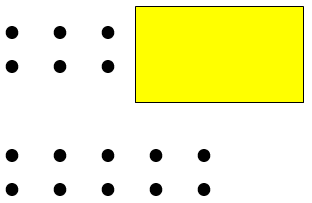
To reinforce the complements to ten students should record their work. Once students have worked with complements to ten they can work with complements to twenty.
Activity 4: Find Your Partner
Photocopy the small Tens Frames given on the Small Tens Frames Partner Cards onto card. Enlarge first if desired. Cut the sheet into individual Tens Frames and hand one Tens Frame to each student. Students walk around the group until they find a student who has a Tens Frame with the right number of dots so that the total of the two Tens Frames is ten dots.
In the example below one student has a Tens Frame with seven dots and another student has a Tens Frame with three dots. Together they have ten dots so they should form a pair. Repeat, giving students different Tens Frames.

To reinforce the complements to ten students should record their work. Once students have worked with complements to ten they can work with complements to twenty.
Activity 5: Bead Frame Patterns
Many other common teaching aids are useful for complements to ten. The picture below shows how a bead frame provides a dramatic visualisation.
